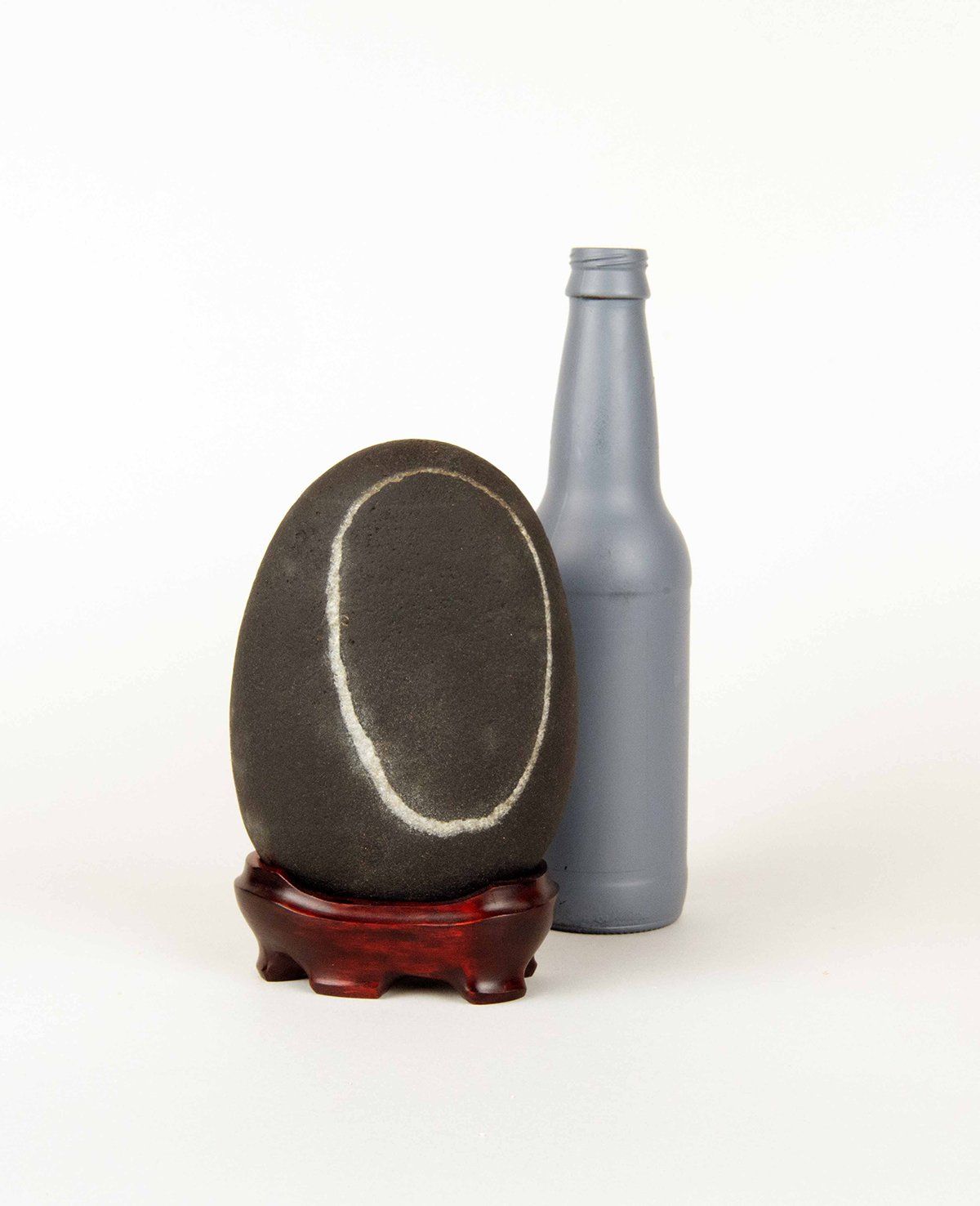
Slide title
Button
Untitled
By Richard Turner
When we pair an object with a stone, we usually do so to influence the viewer’s perception of the stone. We do it to encourage a viewer to see what we, ourselves, see in the stone. We use objects (and images) to establish a sense of scale, suggest a narrative or a season, and otherwise guide a viewer’s perception of our stones. In the case of this display, however, I am turning the tables. I am using the stone to influence a viewer’s understanding of the beer bottle.
If you are a collector of viewing stones, it is easy to understand why Tom Elias added this stone to his collection. It is a pattern stone, but one where the pattern and the shape of the stone echo each other, a quality that makes it especially desirable. The clarity of the brilliant white oval shape against the deep black of the stone makes for a simple, and even pure, visual experience.
But what does the beauty of this Ishikari River stone from Hokkaido in northern Japan have to do with a beer bottle? To my way of thinking, it is an invitation to extend one’s appreciation of the beauty of this natural form to the form of the man-made, mass-produced beer bottle. Painting the bottle a monochromatic grey does away with distracting details and defamiliarizes it, making it easier to consider it as an abstract form. Standing just behind the stone, its simplicity rivals that of the stone itself. The proportions of the parts to the whole and the similar detailing of the top and bottom reflect a refined sense of commercial design. Because bottles, beer, and otherwise [otherwise?] are so much a part of our daily lives, we cannot regard them objectively as we do the stone. If we need to, we can employ our associations with bottles in the service of a narrative—something along the lines of enjoying a cool one after a long day of hunting for stones, or we can imagine the bottle as empty, like the white oval on the stone.

